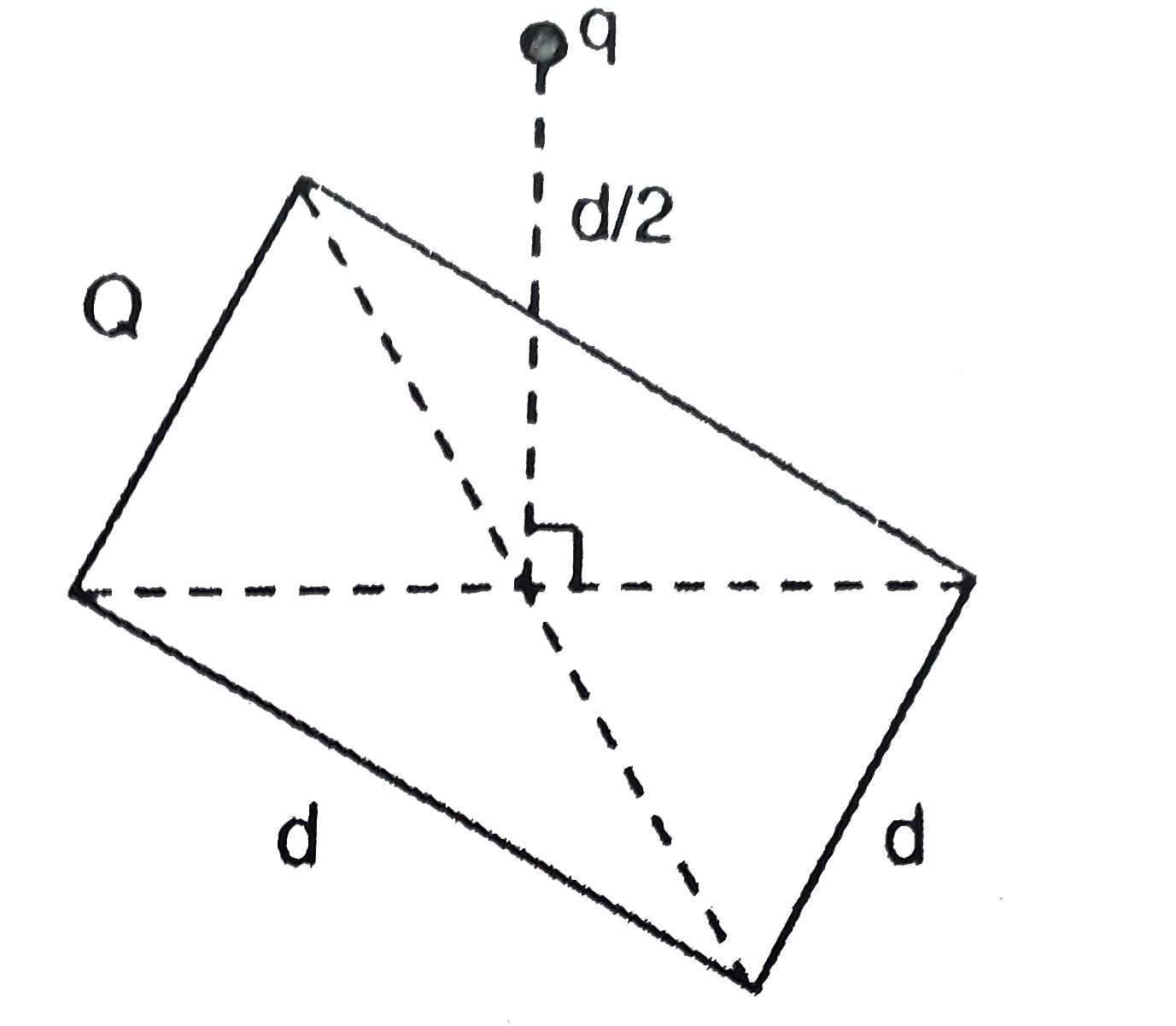A charge + Q is fixed at a distance d in front of an infinite metal plate. Draw the lines of force indicating the directions clearly.
There will be induced charge on two surfaces of conducting plate, so ELOF will start from + Q charge and terminate at conductor and then will again start from other surface of conductor.

Topper's Solved these Questions
- ELECTROSTATICSBook:RESONANCEChapter:ELECTROSTATICSExercise:Problems
Explore 22 Videos
- ELECTROSTATICSBook:RESONANCEChapter:ELECTROSTATICSExercise:Exercise-1 Section (A)
Explore 9 Videos
- ELECTROMAGNETIC INDUCTIONBook:RESONANCEChapter:ELECTROMAGNETIC INDUCTIONExercise:A.l.P
Explore 19 Videos
- EXPERIMENTAL PHYSICSBook:RESONANCEChapter:EXPERIMENTAL PHYSICSExercise:PART -II
Explore 10 Videos
Similar Questions
Two point charge Q and 4Q are fixed at a distance of 12cm from each other. Sketch lines of force and locate the neutral point, if any .
View SolutionFigure shows a point charge +Q, located at a distance R/2 from the centre of a spherical metal shell. Draw the electric field lines for the given system.

View Solution
Knowledge Check
A charge Q is fixed at a distance d in front of an infinite metal plate. The lines of force are represented by
 A
A B
B C
C D
D
An uncharged sphere of metal is placed in between two charged plates as shown. The lines of force look like
 AABBCCDD
AABBCCDDA charge +q is situated at a distance 'd' away from both the sides of a grounded conducting 'L' shaped sheet as shown in the figure.

The force acting on the charge +q isAtowards O, magnitude q232πε0d2(2√2+1)Baway from O, magnitude q232πε0d2(2√2+1)Ctowards O, magnitude q232πε0d2(2√2−1)Daway from O, magnitude q232πε0d2(2√2−1)
Consider an electron in front of metallic surface at a distance d (treated as an infinite plane surface). Assume the force of attraction by the plate is given as 14q24π∈0d2.
Calculate work in taking the charge to an infinite distance from the plate. Taking d=0.1nm, find the work done in electron volts. [Such a force law is not valid for d lt 0.1nm].
View SolutionA square of side d, made from a thin insulating plate, is uniformly charged and carries a total charge of Q. A point charge q is placed on the symmetrical normal axis of the square at a distance d/2 from the plate. How large is the force acting on the point charge ?

View SolutionCharges +q and −2q are fixed at distance d apart as shown in fig.
(i) sketch roughly the pattern of electric field lines, showing the positon of neutral point.
(ii) Where should a charge partical q be placed so that it experience no force ?
 .
.
View SolutionAssertion. If a point charge q is placed in front of an infinite grounded condcuting plane surface, the point charge will experience a force.
Reason. This force is due to the induced charge on the conducting surface which is at zero potential
View SolutionA metallic partical having no net charge is placed near a finite metal plate carrying a positive charge. The electric force on the particale will be
View Solution

